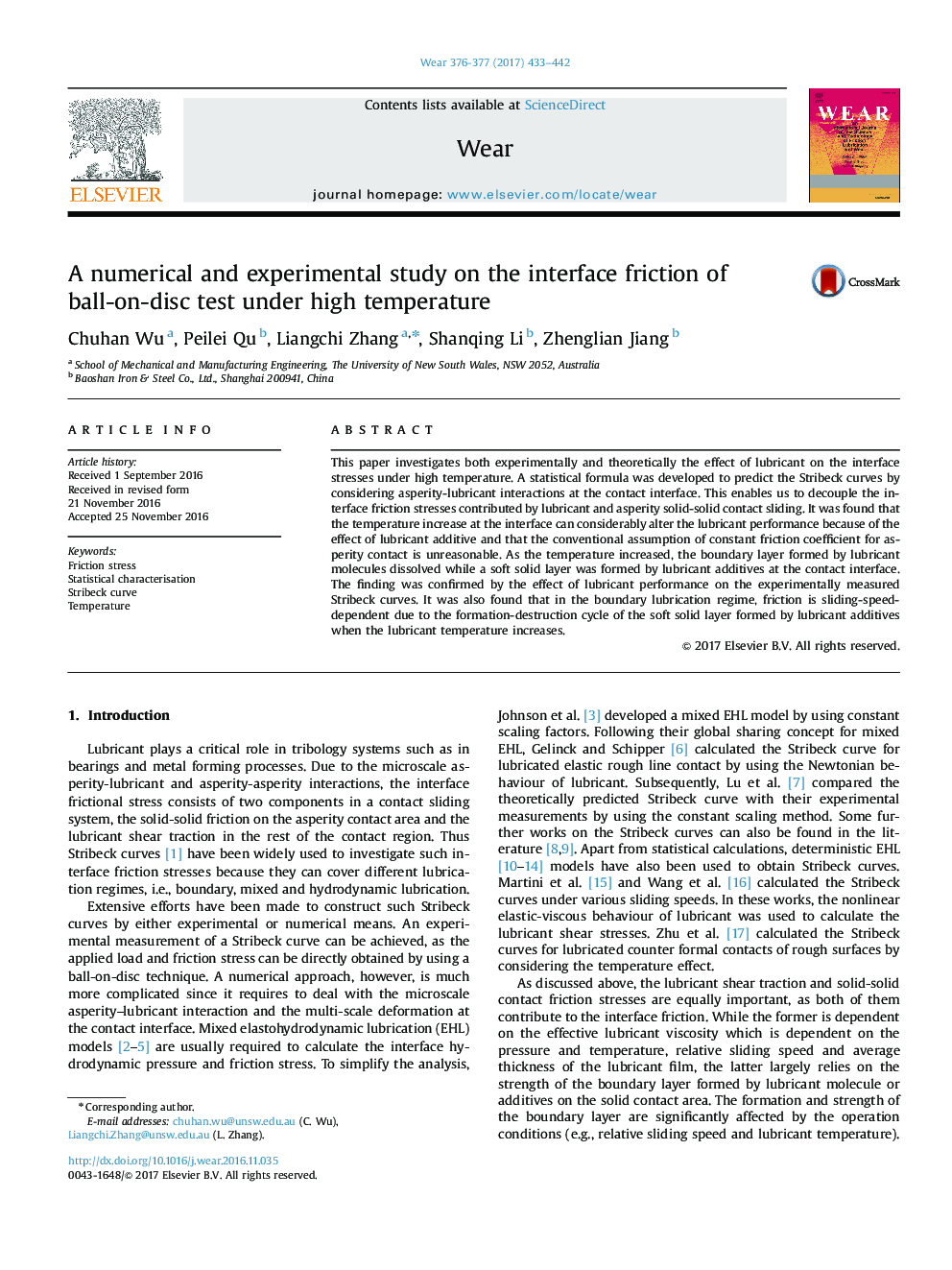| Article ID | Journal | Published Year | Pages | File Type |
|---|---|---|---|---|
| 4986712 | Wear | 2017 | 10 Pages |
Abstract
This paper investigates both experimentally and theoretically the effect of lubricant on the interface stresses under high temperature. A statistical formula was developed to predict the Stribeck curves by considering asperity-lubricant interactions at the contact interface. This enables us to decouple the interface friction stresses contributed by lubricant and asperity solid-solid contact sliding. It was found that the temperature increase at the interface can considerably alter the lubricant performance because of the effect of lubricant additive and that the conventional assumption of constant friction coefficient for asperity contact is unreasonable. As the temperature increased, the boundary layer formed by lubricant molecules dissolved while a soft solid layer was formed by lubricant additives at the contact interface. The finding was confirmed by the effect of lubricant performance on the experimentally measured Stribeck curves. It was also found that in the boundary lubrication regime, friction is sliding-speed-dependent due to the formation-destruction cycle of the soft solid layer formed by lubricant additives when the lubricant temperature increases.
Related Topics
Physical Sciences and Engineering
Chemical Engineering
Colloid and Surface Chemistry
Authors
Chuhan Wu, Peilei Qu, Liangchi Zhang, Shanqing Li, Zhenglian Jiang,
